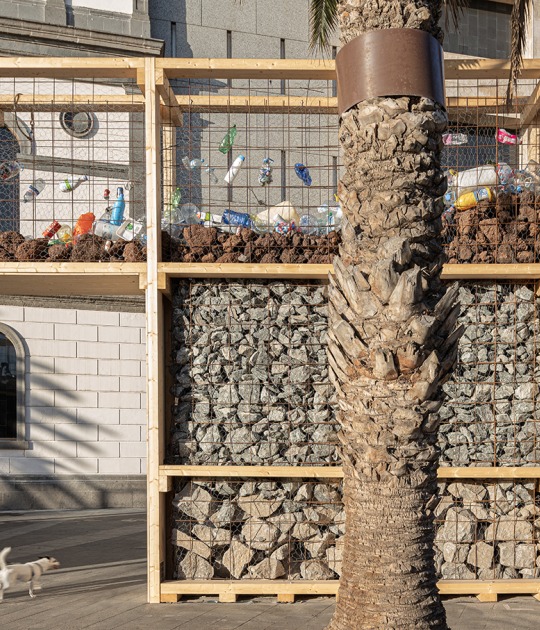The building envelope is made up of three elements, two of which have a ventilated façade formed by a metal mesh supported on structural posts, and a third which forms the main entrance façade to the station and which is symmetrical to the façade of the station. high speed.
The urban environment is also hybridized with the project thanks to the development of a set of five residential and commercial buildings, establishing an interesting dialogue between the park and the residential towers that will have large solar collectors on their roofs to facilitate the energy self-sufficiency of the buildings and the lighting of the park.
Project description by Iñaki Ábalos
Urban Circularity and Sustainability
There is much talk of circularity nowadays and this urban project is a case that could go even further because it is exemplary in many ways. If the first objective of circularity is the benefit of citizens and the environment, this proposal determined as its first requirement to use this urban operation for the creation of a large public green space that balances historical centrality as much as possible, generating a pole of attraction to the south. A physical and therefore social barrier has been replaced by a park that brings together two previously separated sides and generates great appeal and novelty for living in the area.
The natural conditions of the Logroño settlement were used for this, especially the abundance of water in the phreatic level, a singular case in Hispanic urban geography, and therefore the main concerns were to develop a park that in those conditions was easy to maintain and nice to use.
Likewise, the 5 small residential towers planned are crowned with large solar collectors that in principle are designed to supply warm water and also to provide free public lighting for the park. In other words, attempts have been made at all times to favor the lives of residents and minimize maintenance costs.
All of this is done taking advantage of an urban operation originally linked exclusively to ADIF's merely railway problems: it was precisely this vision of circularity and return to the citizen and the environment that convinced the jury and what has subsequently allowed the generation of one of the most inclusive projects which have been developed not only in Spain but also in the European context* giving a dual role to the stations as spaces for intermodal use and as an integrating park.
* The complex is in the process of being certified with the international sustainability standard BREEAM Urbanism, an environmental quality seal that has only been awarded to 52 urban projects around the world.





































